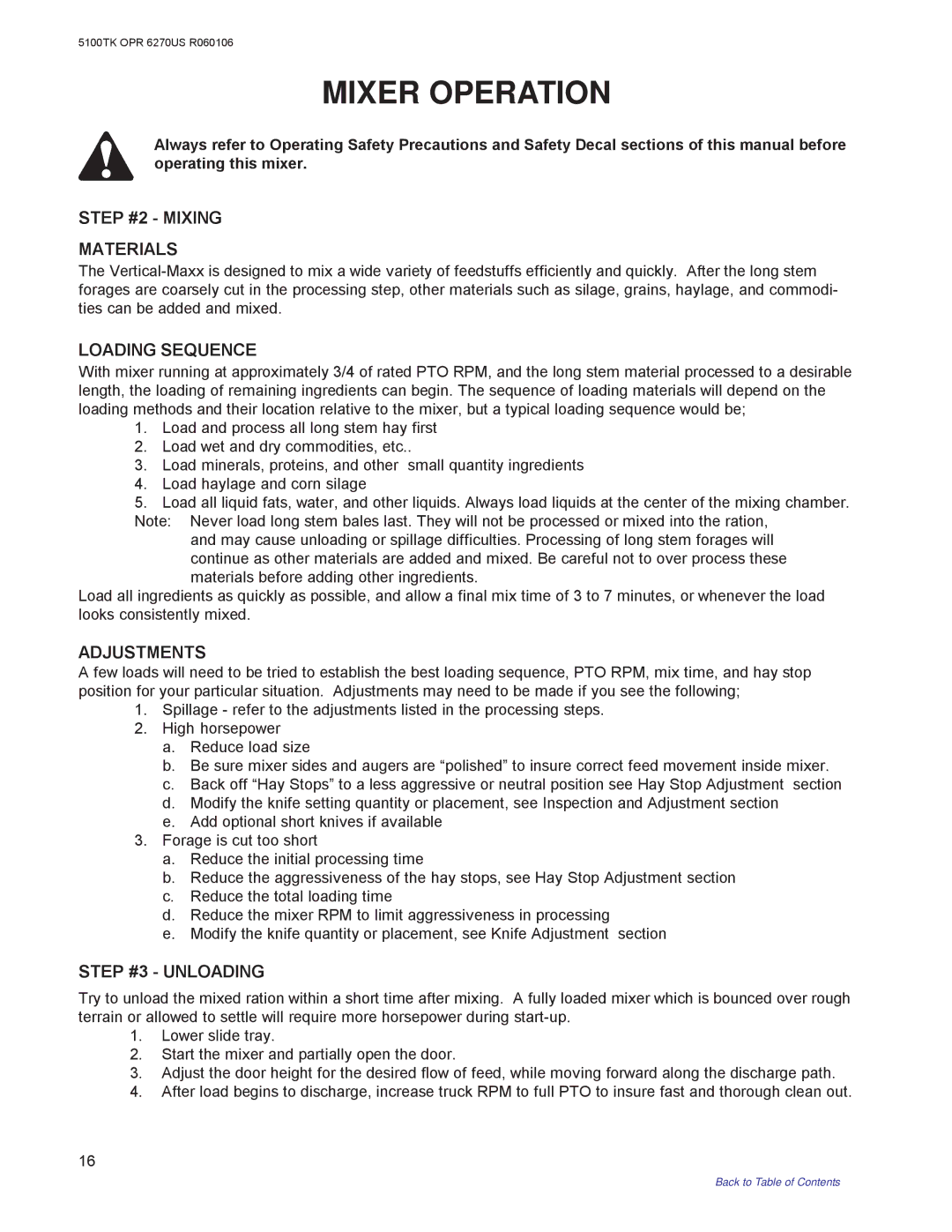5100TK OPR 6270US R060106
MIXER OPERATION
Always refer to Operating Safety Precautions and Safety Decal sections of this manual before operating this mixer.
STEP #2 - MIXING
MATERIALS
The
LOADING SEQUENCE
With mixer running at approximately 3/4 of rated PTO RPM, and the long stem material processed to a desirable length, the loading of remaining ingredients can begin. The sequence of loading materials will depend on the loading methods and their location relative to the mixer, but a typical loading sequence would be;
1.Load and process all long stem hay first
2.Load wet and dry commodities, etc..
3.Load minerals, proteins, and other small quantity ingredients
4.Load haylage and corn silage
5.Load all liquid fats, water, and other liquids. Always load liquids at the center of the mixing chamber. Note: Never load long stem bales last. They will not be processed or mixed into the ration,
and may cause unloading or spillage difficulties. Processing of long stem forages will continue as other materials are added and mixed. Be careful not to over process these materials before adding other ingredients.
Load all ingredients as quickly as possible, and allow a final mix time of 3 to 7 minutes, or whenever the load looks consistently mixed.
ADJUSTMENTS
A few loads will need to be tried to establish the best loading sequence, PTO RPM, mix time, and hay stop position for your particular situation. Adjustments may need to be made if you see the following;
1.Spillage - refer to the adjustments listed in the processing steps.
2.High horsepower
a.Reduce load size
b.Be sure mixer sides and augers are “polished” to insure correct feed movement inside mixer.
c.Back off “Hay Stops” to a less aggressive or neutral position see Hay Stop Adjustment section
d.Modify the knife setting quantity or placement, see Inspection and Adjustment section
e.Add optional short knives if available
3.Forage is cut too short
a.Reduce the initial processing time
b.Reduce the aggressiveness of the hay stops, see Hay Stop Adjustment section
c.Reduce the total loading time
d.Reduce the mixer RPM to limit aggressiveness in processing
e.Modify the knife quantity or placement, see Knife Adjustment section
STEP #3 - UNLOADING
Try to unload the mixed ration within a short time after mixing. A fully loaded mixer which is bounced over rough terrain or allowed to settle will require more horsepower during
1.Lower slide tray.
2.Start the mixer and partially open the door.
3.Adjust the door height for the desired flow of feed, while moving forward along the discharge path.
4.After load begins to discharge, increase truck RPM to full PTO to insure fast and thorough clean out.
16
Back to Table of Contents
